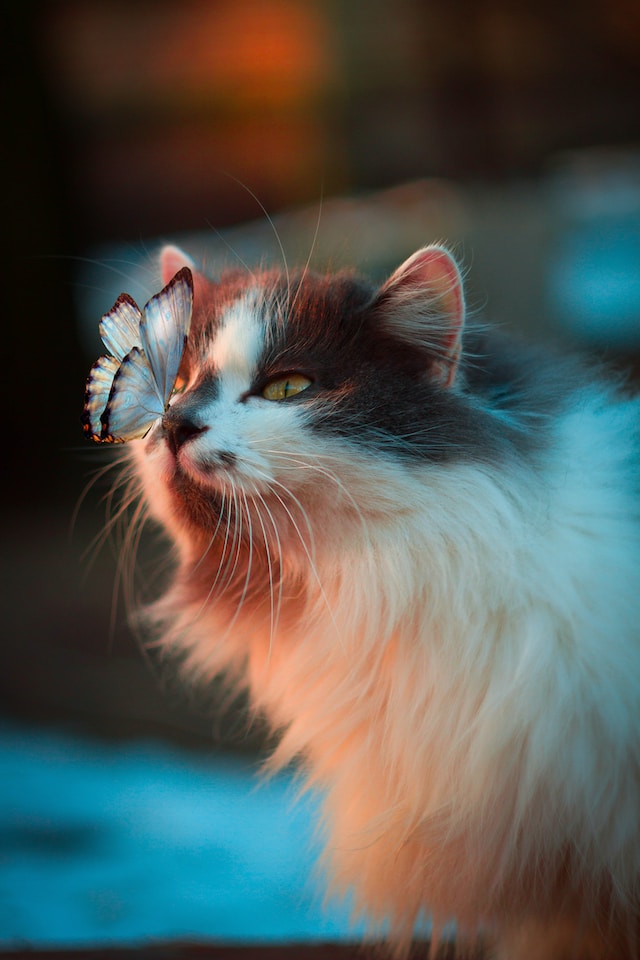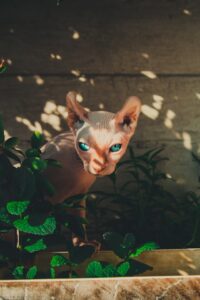
Fascinating Facts About Cats You Probably Didn’t Know
Contents
- 1 Cats purr at the same frequency as an idling diesel engine.
- 2 A house cat can sprint up to 30 miles per hour.
- 3 A male cat is called a “tom.”
- 4 Female cats are called “molly,” “queen,” “dolly” or “puss.”
- 5 Cats sleep for approximately 16 hours each day.
- 6 Cats have Weber’s Law, which means they hear higher frequencies better than low ones.
- 7 They have excellent night vision, but are color blind.
- 8 They have scent glands near their mouth, on their paws and on the bottom of their tail which they use to mark their territory with pungent odors by rubbing them on objects. These secretions may also communicate its state of mind – for example, a frightened cat will release urine before running away from danger (it does this by raising its tail and spraying urine backwards at its pursuer). You can read more about it here. To learn more about what cats think you can read this article here.
- 9 Conclusion
Cats are mysterious creatures. Their behavior can seem aloof and unpredictable, but they’re also affectionate, lovable and playful. They’re independent and intelligent, which means they have a lot more going on in their brains than we often think!
Here are some fascinating facts about cats that will help you get to know them better:
Cats purr at the same frequency as an idling diesel engine.
Did you know that cats purr at the same frequency as an idling diesel engine? Cats use their purring to communicate with each other, but it can also be a sign of contentment, happiness and relaxation.
A cat will often purr when she’s hungry or in pain. She might also purr when she is being petted by her owner or another person who loves her very much!
A house cat can sprint up to 30 miles per hour.
A cat’s speed is impressive, especially considering that they don’t even have to run at all. Cats can sprint up to 30 miles per hour when they need to, so if you’re in a hurry and your cat refuses to move out of your way, just pick them up and carry them with you!
Cats are also great jumpers. They can jump up to 6 feet in the air (that’s like jumping over three people) and as far as 8 times their height–the equivalent of jumping two stories high! If there’s anything in your house that needs moving from one place to another, leave it up to your cat: he or she will get right on it!
A male cat is called a “tom.”
- A male cat is called a “tom.”
- A female cat is called a molly, queen, dolly or puss.
- Tom is short for tomcat; this word originated in the 17th century and referred to an unneutered male cat that lived outdoors. It was derived from the name Thomas and has been used as slang for “man” since at least 1725 (it appeared in William Hogarth’s painting Marriage A La Mode).
Female cats are called “molly,” “queen,” “dolly” or “puss.”
Female cats are called “molly,” “queen,” “dolly” or “puss.” Male cats are called tom, boy or gus.
Cats sleep for approximately 16 hours each day.
Cats are nocturnal animals, which means they sleep during the day and are active at night. In fact, cats spend an estimated 16 hours a day sleeping!
The amount of rest your cat needs depends on various factors like age and health condition but generally speaking, most adult cats get by with about 16 hours’ worth of shut eye on average. However some kittens may require even more sleep than others while senior felines might need less than this since they’re not as active as their younger counterparts or prone to bouts of playfulness anymore (although there’s nothing wrong with letting them indulge once in awhile).
Cats can also become insomniacs if something goes wrong within their bodies: for example if they have diabetes mellitus type 2 then it will cause them discomfort throughout the whole body including their paws; this could lead up into restless nights where these poor creatures aren’t able to rest properly due
to constant discomfort when trying out different positions before finally falling asleep again later on
Cats have Weber’s Law, which means they hear higher frequencies better than low ones.
Cats have Weber’s Law, which means they hear higher frequencies better than low ones. This means that cats can hear human voices but not understand what we are saying.
The reason for this is that the cat’s ear structure is specifically designed to pick up higher frequencies. The outer ear is long and narrow, which helps funnel sound into the auditory canal where it passes through tiny bones called ossicles before reaching two small openings called tympanic membranes (or eardrums). These membranes vibrate in response to incoming waves of air pressure from outside sources like your voice or purring cat!
They have excellent night vision, but are color blind.
Cats have excellent night vision and can see in dim light. However, their eyes are not as good at detecting color as those of humans and dogs.
The retina at the back of your cat’s eye contains a reflective layer (called the tapetum lucidum) that helps it to see better in dim light. This is why when you shine a flashlight into your cat’s eyes they look like they’re glowing–the tapetum lucidum reflects light back onto itself, giving them an eerie glow!
They have scent glands near their mouth, on their paws and on the bottom of their tail which they use to mark their territory with pungent odors by rubbing them on objects. These secretions may also communicate its state of mind – for example, a frightened cat will release urine before running away from danger (it does this by raising its tail and spraying urine backwards at its pursuer). You can read more about it here. To learn more about what cats think you can read this article here.
Cats have scent glands near their mouth, on their paws and on the bottom of their tail which they use to mark their territory with pungent odors by rubbing them on objects. These secretions may also communicate its state of mind – for example, a frightened cat will release urine before running away from danger (it does this by raising its tail and spraying urine backwards at its pursuer). You can read more about it here. To learn more about what cats think you can read this article here.
Conclusion
So, what do you think? Are you as fascinated by cats as we are? We hope so!



Average Rating